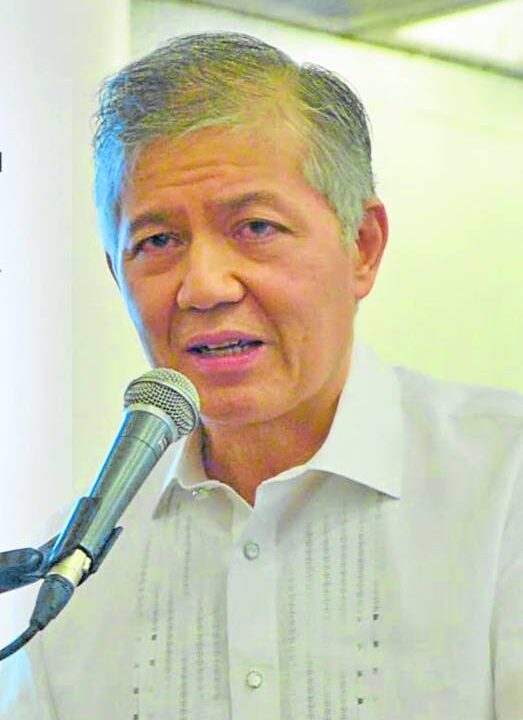
Michael de Jesus —DBP PHOTO
The country could expect to see economic gains from the Maharlika Investment Fund (MIF) by the time President Marcos steps down in 2028, the chief of the Development Bank of the Philippines (DBP) said on Saturday.
Officials said the seed capital of P150 billion for the Maharlika Investment Corp. (MIC), which would manage the MIF, amounted to P107 billion as of Saturday, a day before the deadline set by the law creating the Maharlika fund.
DBP president and CEO Michael de Jesus on Saturday announced that it deposited its P25-billion contribution on Sept. 14, the same day that the Land Bank of the Philippines (Landbank) remitted its P50-billion share to the Bureau of the Treasury.
“DBP is enthused with our full contribution to the MIF,” De Jesus said. “We are one with President Marcos Jr. in ensuring the immediate establishment of the Maharlika Investment Corporation which would shepherd the initiatives that would reshape and redefine the country’s economic landscape.”
Other contributors
Republic Act No. 11954, the law that established the MIF, directs the Bangko Sentral ng Pilipinas (BSP) to contribute to the national government’s share of P50 billion in the initial MIC capitalization from 50 percent of its dividends, which amounted to P31.86 billion in July.
“DBP foresees that in the next four to five years, the country should be reaping the gains from both on the financial and developmental fronts as a result of the trailblazing activities of the MIC,” De Jesus said.
ALSO READ: Priority projects can now rely on Maharlika Investment Fund — Bongbong Marcos
The MIF law mandates an authorized capital stock of P500 billion for the MIC.
Finance Secretary Benjamin Diokno, who will chair the MIC, on Friday said that the remittances from the country’s two largest state-owned financial institutions would pave the way for the full operationalization of the company by year-end.
He said many foreign and domestic investors were “eagerly awaiting” the establishment of the MIC.
De Jesus said DBP expects the MIF and MIC to be properly and effectively managed through strong leadership and corporate governance.
ALSO READ: 11 Cebu lawmakers back bill creating Maharlika Investment Fund
He said that MIC should be able to optimize the use of the government’s financial assets to generate substantial returns and support infrastructure projects in order to promote efficient management of wealth and assets.
Nominations for MIC
The government has set a Sept. 27 deadline for nominations for the MIC’s top managers, including its president and concurrent chief executive plus two regular and three independent directors from the private sector.
The others in the nine-member MIC board are the finance secretary, who will serve as chair, and the respective president and CEO of Landbank and DBP.
The MIC is supposed to identify financially and commercially viable infrastructure projects to invest in, and will formulate investment strategies covering emerging “megatrends,” such as environment, social and governance, digitalization; and health care.
Criticism, red flags
It would also invest in a wide range of assets, including foreign currencies, fixed-income instruments, domestic and foreign corporate bonds, joint ventures, mergers and acquisitions, real estate and high-impact infrastructure, and projects that contribute to the attainment of sustainable development.
ALSO READ: Keep watch on Maharlika Investment Fund, Escudero urges critics
Critics of Maharlika said it was being pitched as a sovereign wealth fund, but unlike those of other countries, it is not being created from surplus revenues. Also, the MIF as established is not focused on accumulating wealth but rather on stabilizing national finances.
They cited red flags in the MIC’s governance structure, which they said was poorly designed and could open the floodgates for political interference, mismanagement and corruption.
The Marcos administration’s economic team argued that the final version of the law as well as the implementing rules and regulations (IRR) address these concerns, especially the governance issues.
Still unclear
Reacting to the first announcement of Landbank’s P50-billion contribution, the Action for Economic Reforms, a private think tank on economic policies, said state funds would be invested in “something that until now is not clear.”
“That means Landbank’s fund for Maharlika is at present sleeping,” it said. “Worse it means that Landbank is forgoing funds that could have been used to fulfill Landbank’s core functions like providing credit to farmers and financing agrarian reform beneficiaries, promoting SMEs (small and medium enterprises) and agri projects, etc.”
These were the same concerns expressed by George Barcelon, president of the Philippine Chamber of Commerce and Industry, who said that the MIC board should have been established before any contributions were made.
This should be the priority because the MIF involves funds that are “taken out of circulation” instead of being used in lending for productive activities in the case of Landbank and DBP, and for public services in the case of the money from the national government, he said.
“We want the setup of the (MIC’s) governing body shared with the public first,” Barcelon told the Inquirer. “Knowing who they are should precede any other concern.”
